
Herbert George Wells was an English writer. Prolific in many genres, he wrote more than fifty novels and dozens of short stories. His non-fiction output included works of social commentary, politics, history, popular science, satire, biography, and autobiography. Wells' science fiction novels are so well regarded that he has been called the "father of science fiction".
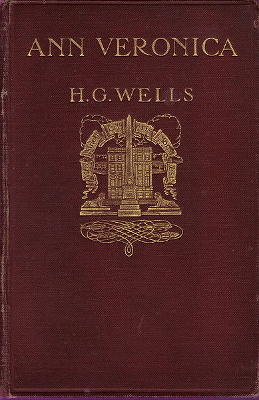
Ann Veronica is a novel by H. G. Wells published in 1909. It describes the rebellion of Ann Veronica Stanley, "a young lady of nearly two-and-twenty", against her middle-class father's stern patriarchal rule. The novel dramatizes the contemporary problem of the New Woman. It is set in Edwardian era London and environs, except for an Alpine excursion. Ann Veronica offers vignettes of the women's suffrage movement in Great Britain and features a chapter inspired by the 1908 attempt of suffragettes to storm Parliament.
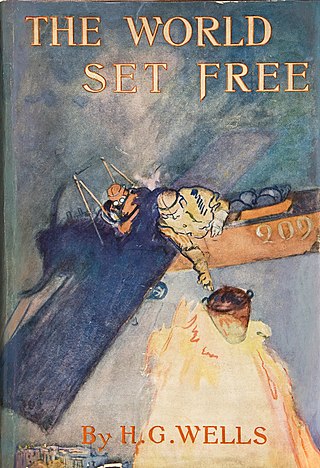
The World Set Free is a novel written in 1913 and published in 1914 by H. G. Wells. The book is based on a prediction of a more destructive and uncontrollable sort of weapon than the world has yet seen. It had appeared first in serialised form with a different ending as A Prophetic Trilogy, consisting of three books: A Trap to Catch the Sun, The Last War in the World and The World Set Free.
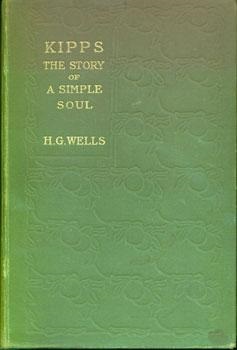
Kipps: The Story of a Simple Soul is a novel by H. G. Wells, first published in 1905. It was reportedly Wells's own favourite among his works, and it has been adapted for stage, cinema and television productions, including the musical Half a Sixpence.

The History of Mr. Polly is a 1910 comic novel by H. G. Wells.

The Dream is a 1924 novel by H. G. Wells about a man from a Utopian future who dreams the entire life of an Englishman from the Victorian and Edwardian eras, Harry Mortimer Smith. As in other novels of this period, in The Dream Wells represents the present as an "Age of Confusion" from which humanity will be able to emerge with the help of science and common sense.
"The Pearl of Love" is a 1925 short story about devotion by H. G. Wells.

The Wonderful Visit is an 1895 novel by H. G. Wells. With an angel—a creature of fantasy unlike a religious angel—as protagonist and taking place in contemporary England, the book could be classified as contemporary fantasy, although the genre was not recognised in Wells's time. The Wonderful Visit also has strong satirical themes, gently mocking customs and institutions of Victorian England as well as idealistic rebellion itself.

Mr. Britling Sees It Through is H.G. Wells's "masterpiece of the wartime experience in south eastern England." The novel was published in September 1916.

Marriage is a 1912 novel by H. G. Wells.

The Soul of a Bishop is a 1917 novel by H. G. Wells.

The World of William Clissold is a 1926 novel by H. G. Wells published initially in three volumes. The first volume was published in September to coincide with Wells's sixtieth birthday, and the second and third volumes followed at monthly intervals.
The Wife of Sir Isaac Harman is a 1914 novel by H. G. Wells.

Bealby: A Holiday is a 1915 comic novel by H. G. Wells.

Experiment in Autobiography is an autobiographical work by H.G. Wells, originally published in two volumes. He began to write it in 1932, and completed it in the summer of 1934.

Mr. Blettsworthy on Rampole Island is a 1928 novel by H. G. Wells. The novel entered the public domain in the United States in 2024.

The Bulpington of Blup is a 1932 novel by H. G. Wells. It is a character study analyzing the psychological sources of resistance to Wellsian ideology, and was influenced by Wells's acquaintance with Carl Gustav Jung and his ideas.
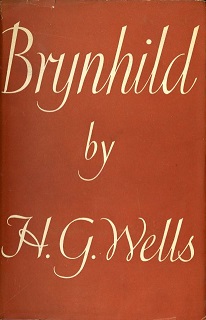
Brynhild, or The Show of Things is a 1937 novel by H. G. Wells.

Joan and Peter, a 1918 novel by H. G. Wells, is at once a satirical portrait of late-Victorian and Edwardian England, a critique of the English educational system on the eve of World War I, a study of the impact of that war on English society, and a general reflection on the purposes of education. Wells regarded it as "one of the most ambitious" of his novels.
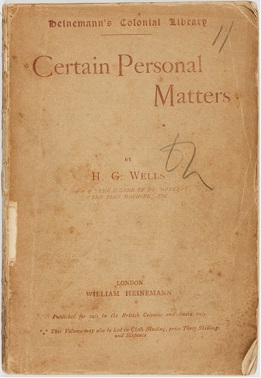
Certain Personal Matters is an 1897 collection of essays selected by H. G. Wells from among the many short essays and ephemeral pieces he had written since 1893. The book consists of thirty-nine pieces ranging from about eight hundred to two thousand words in length. A one-shilling reprint was issued in 1901 by T. Fisher Unwin.

















